Poorest States in Nigeria: Nigeria is endowed with abundant natural and mineral resources. These resources pave the way for economic activity, resulting in an increase in the source region’s earnings. There is sure to be a large deposit of these resources in the country, which is made up of over 36 states. Despite the fact that some states are producing a lot of money, they are all below average in terms of paying capital income. In Nigeria, these are the poorest states.
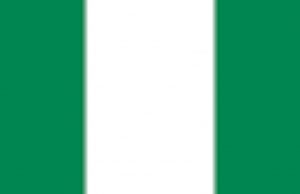
In this article, we will highlight the country’s least fortunate states, as determined by data from the national bureau of statistics, after they have examined their infrastructure, economics, competence level, security, and administration to address these concerns.
We shall list which states in Nigeria are the poorest based on this information.
Recommended: Top 10 Richest States in Nigeria
Top 17 Poorest States in Nigeria and their Poverty Rate 2024
1. Sokoto: Sokoto state has been named Nigeria’s worst state, with an estimated poverty rate of 87.73 percent in 2019. Coming from the most impoverished and insecure part of the country, the state has struggled to attract foreign investors and produce money on its own.
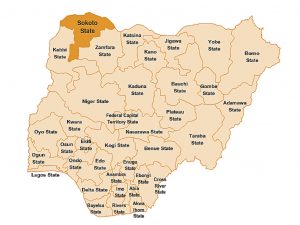
Sokoto is believed to be the greatest producer of onions, tomatoes, and other perishable items; nevertheless, the state’s development is threatened by abandoned road projects littering several sections of the state. Residents want simple access to locations where their goods and services may be distributed.
2. Taraba: Taraba state is a tropical state in the country’s north-eastern region. It shares a border with the Cameron Republic. The state’s poverty rate is practically identical to that of Sokoto state, at 87.72 percent. Agriculture is the most common employment, with a concentration on commercial farming.
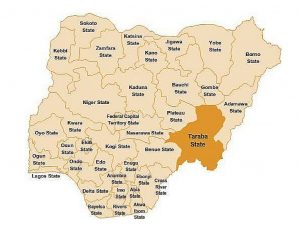
The poor state of Jalingo’s roadways is apparent during wet seasons. Residents have long complained about the government’s failure to provide excellent roads, which has hampered the state’s economic development.
Also see: Most Dangerous Hacking Groups in the World
3. Jigawa: The Northern area (Jigawa) is also home to Nigeria’s third poorest state. The Republic of Niger has a border with Jigawa. The poverty rate is 87.2 percent, making it one of the states with the most people. The state has a semi-arid climate and relies heavily on agriculture for its livelihood.
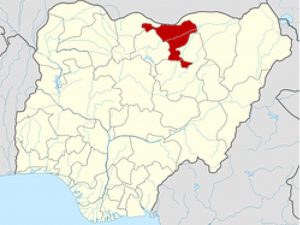
The Kurnya-Babura road along the shared border with Niger has been approved for building as part of the Nigerian government’s endeavor supply infrastructure for economic growth.
4. Ebonyi: Ebonyi is the first state from Nigeria’s South-East to reach the list of the country’s poorest states, with a poverty rate of 79.76 percent. It was just 25 years ago that it was developed. Because the majority of indigenes are uneducated, agriculture is their main source of income. In Nigeria, the state is the biggest rice producer.
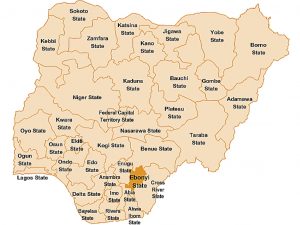
Ebonyi is among the states that can brag of having an excellent motorable road, as the status of roads has continued to improve. The state administration is concentrating on developing infrastructure for the state’s growth.
Also see: Highest paying courses to study in Nigeria
5. Adamawa: Boko Haram’s unrelenting strikes have presented a serious threat to Adamawa’s economy. Business as normal has been disrupted by citizens fleeing for their lives. As a result, they are among Nigeria’s poorest states. 75.41 percent of the population lives in poverty.
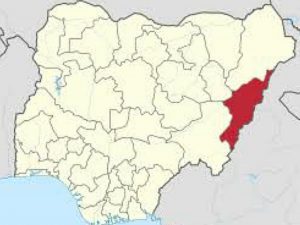
The state of Adamawa’s road networks are stated to be in terrible shape and in need of restoration. With several roadways washed away by floods in 2019, the state government stepped in to help by halting building on some of the impacted routes in 2019.
6. Zamfara: Zamfara state is another state in Nigeria’s northeast that has been impacted by the country’s continuous attacks and kidnappings. Residents have sought shelter in surrounding towns, with many now struggling to make ends meet. Because many economic operations have come to a halt, the poverty rate has risen to 73.98 percent.
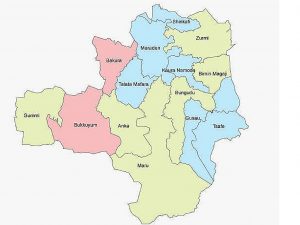
In Zamfara, the road condition is classified as fair. Potholes can be seen here and there, and some routes are inaccessible.
Recommended: Best businesses to start in Nigeria with 100,000 naira
7. Yobe: Yobe state is a farming state in the northeastern part of the country. Despite being the country’s largest cattle provider, the state is one of the poorest in the country. Yobe state’s poverty rate is estimated to be 72.34 percent.
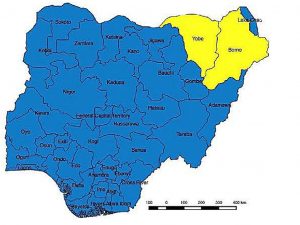
There have been indications that the state’s road conditions have improved. The state government set aside more than $29 million for road and market project implementation earlier this year.
Also see: Countries with the best police force in the World
8. Niger: Niger state is the country’s largest state and is located in the country’s center belt. The state’s poverty rate is exacerbated by widespread illiteracy and a climatic shock that has harmed agriculture. In addition, Boko Haram attacks in some areas have harmed economic operations, raising the poverty rate to 66.11 percent.
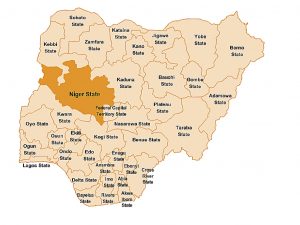
The status of the federal highways in Niger has been said to be appalling. Some highways require restoration or total reconstruction, while others only require routine upkeep.
9. Gombe: Insecurity is also a problem in Gombe state. It is situated in the northeastern portion of the country, where insurgency has become the norm. As a result, the state’s poverty rate has risen to 62.31 percent.
Motorists in the state have expressed their dissatisfaction with the quality of several Gombe roads. A big portion of the roadways have been washed away by the flood. This irritates motorists while also costing the state money.
Also see: Advantages And Disadvantages Of a Mixed Economy
10. Katsina: The state of Katsina is located in the country’s northwest corner. There have also been multiple bandit raids, which have nearly paralyzed the state’s economic activity. With a poverty rate of 56.42 percent, it’s no wonder it’s one of the poorest states.
According to reports, 75% of people live in rural areas with deteriorating transportation lines. The state government, on the other hand, has begun to open rural roads to make mobility easier for rural residents.
11. Plateau: Being big tin and columbite exporters wasn’t enough to alleviate poverty in Plateau state. The poverty rate of 55.1 percent indicates that half of the population cannot afford basic necessities. With its steep hills, the state has the potential to become a tourism destination, boosting its economy.
A number of highways in the state are impassable. According to reports, the state has 53 active road projects that are scheduled to be completed soon.
Also see: Countries with the Weakest currency in the world
12. Nasarawa: Nasarawa state is located in Nigeria’s North Central zone. It essentially connects multiple states, including Kogi, Benue, and Kaduna. Despite being the country’s largest producer of salt, Nasarawa has a poverty rate of 57.3 percent.
The state is undergoing a steady process of road repairs, restoration, and building.
13. Benue: Benue is among the states in the North Central region. We don’t anticipate it to be on the list because it prides itself on being the nation’s food basket. However, data contradicts this. The state’s poverty rate is 32.9 percent. Farmers and Fulani herders have been known to engage in violent conflicts throughout the state.
Even though Benue has several federal highways, they are in poor condition. Farmers have found it difficult to move their agricultural produce to other regions of the country as a result of this.
Recommended: Most Respected Countries In The World 2024
14. KEBBI: Kebbi State, located in northwestern Nigeria, is the first on our list of the poorest states in Nigeria. According to the National Bureau of Statistics, Kebbi State has a poverty rate of 72.0%, which is higher than the national poverty rate of 40.1%.Kebbi State’s high poverty percentage is a result of a number of factors.
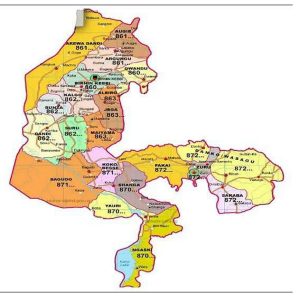
The state’s reliance on agriculture as the primary source of income for the majority of its citizens is one of the key contributing factors. Small-scale subsistence farmers make up the majority of the state’s agricultural workforce; they lack access to modern farming techniques, sufficient credit choices, and markets where they can trade their goods.Additionally, Kebbi State has poor infrastructure, including inadequate road networks, limited access to electricity, and poor healthcare facilities. This makes it difficult for businesses to thrive and for the state to attract foreign investment.
Furthermore, the state has a high population growth rate, which puts pressure on the limited resources and exacerbates poverty. There is also a high level of illiteracy and low educational attainment, which hinders the development of human capital and makes it difficult for the state to compete in the global market.To address these challenges, the government of Kebbi State has launched various initiatives aimed at promoting economic development and reducing poverty. These initiatives include improving agricultural productivity through the provision of modern farming technologies, enhancing access to credit facilities, building road networks, improving healthcare facilities, and investing in education.
Also see: Youngest Billionaires In The World 2023 (With Pictures)
15. KOGI: Kogi State, located in central Nigeria, is also considered one of the poorest states in Nigeria. According to the National Bureau of Statistics, Kogi State has a poverty rate of 49.8%, which is higher than the national poverty rate of 40.1%. Similar to Kebbi State, Kogi State also depends largely on agriculture as the main source of livelihood for the majority of the population. However, the state’s agricultural sector is largely dominated by subsistence farmers who lack access to modern farming technologies and adequate credit facilities, which limits their productivity and income.
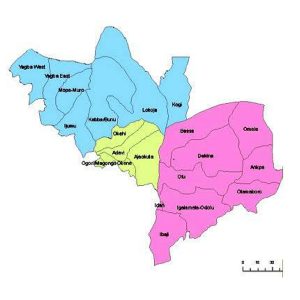
Another major challenge facing Kogi State is the lack of basic infrastructure, including inadequate road networks, limited access to electricity, and poor healthcare facilities.
These challenges make it difficult for businesses to thrive and for the state to attract foreign investment.Additonally, Kogi State has a high rate of unemployment and low levels of education, which hinders the development of human capital and makes it difficult for the state to compete in the global market.
Recommended: Most Popular People In The World 2024
16. Kaduna: Kaduna State, in northwest Nigeria, is not typically regarded as one of the nation’s poorest regions. In actuality, Kaduna State has a poverty rate of 34.7%, which is lower than the national poverty rate of 40.1%, according to the National Bureau of Statistics.However, while the poverty rate in Kaduna State is relatively lower than some other states in Nigeria, the state still faces a number of challenges that hinder its economic development and contribute to poverty.
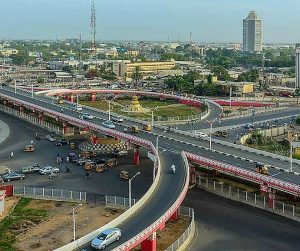
One of the main challenges is the security situation, particularly the recurring incidents of inter-communal and religious conflicts that have affected the state over the years. These conflicts have led to loss of lives and property, displacement of people, and disruption of economic activities, particularly in rural areas where agriculture is the main source of livelihood. Additionally, Kaduna State, like many other states in Nigeria, has a weak and poorly developed infrastructure, particularly in rural areas. This includes inadequate road networks, limited access to electricity, and poor healthcare facilities, which limit economic opportunities and access to basic services.
Recommended: Countries with the Most Beautiful Women in Africa
17. Ekiti State: Ekiti State, located in the southwestern region of Nigeria, has the sixth-lowest population in the country and is ranked as the tenth most impoverished state. Agriculture, which serves as the foundation of Ekiti’s economy and employment, is a sector that is not being fully used due to inadequate investment, inadequate infrastructure, and limited access to finance.
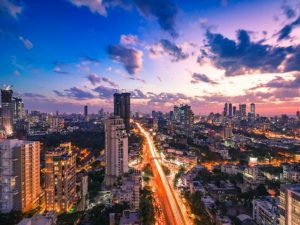
Consequently, farmers in Ekiti have seen diminished productivity and little income, contributing to the state’s classification as one of the most impoverished regions in Nigeria. Ekiti State, located in southwest Nigeria (Yoruba country), does not possess an airport, a railway, or a federal road, making it the most economically disadvantaged state in the region. Additionally, it has the fourth-lowest Gross Domestic Product (GDP) in the country and holds the lowest GDP in the Southwest region.
Recommended: Most Challenging/Difficult Parts of Being a Leader
Conclusion
Based on statistics from the National Bureau of Statistics, we generated this list of Nigeria’s 16 poorest states for 2024. Infrastructure development, economic health, literacy levels, security, and governance were all taken into account.
The following is a current list of Nigeria’s poorest states; these states will always rely on the federal government for almost everything, if not everything. They have a very few source of revenue.

Edeh Samuel Chukwuemeka, ACMC, is a lawyer and a certified mediator/conciliator in Nigeria. He is also a developer with knowledge in various programming languages. Samuel is determined to leverage his skills in technology, SEO, and legal practice to revolutionize the legal profession worldwide by creating web and mobile applications that simplify legal research. Sam is also passionate about educating and providing valuable information to people.
Good write-up!